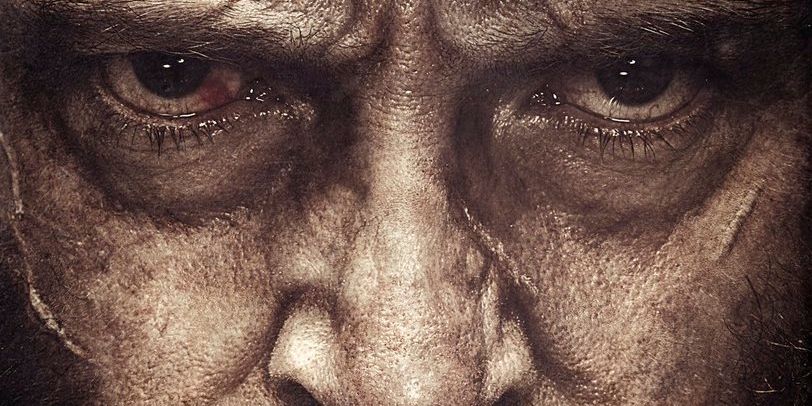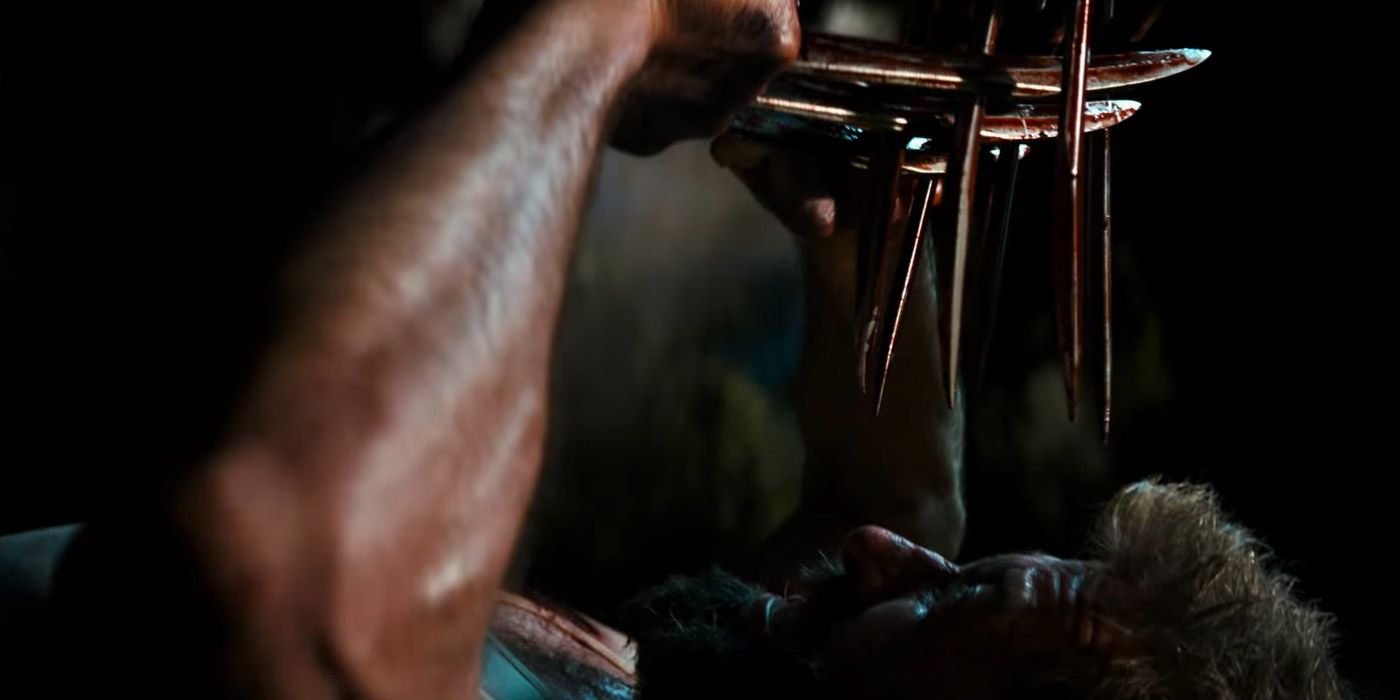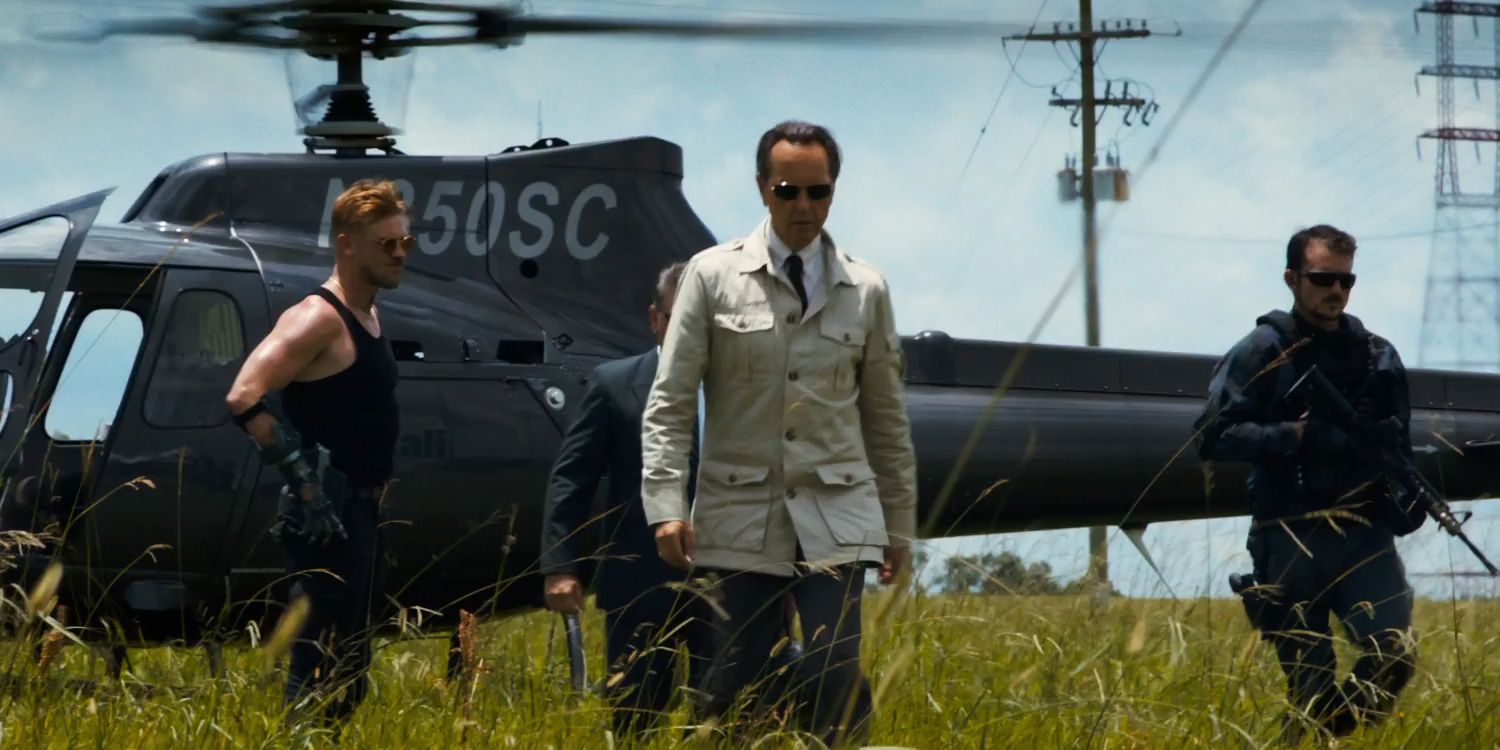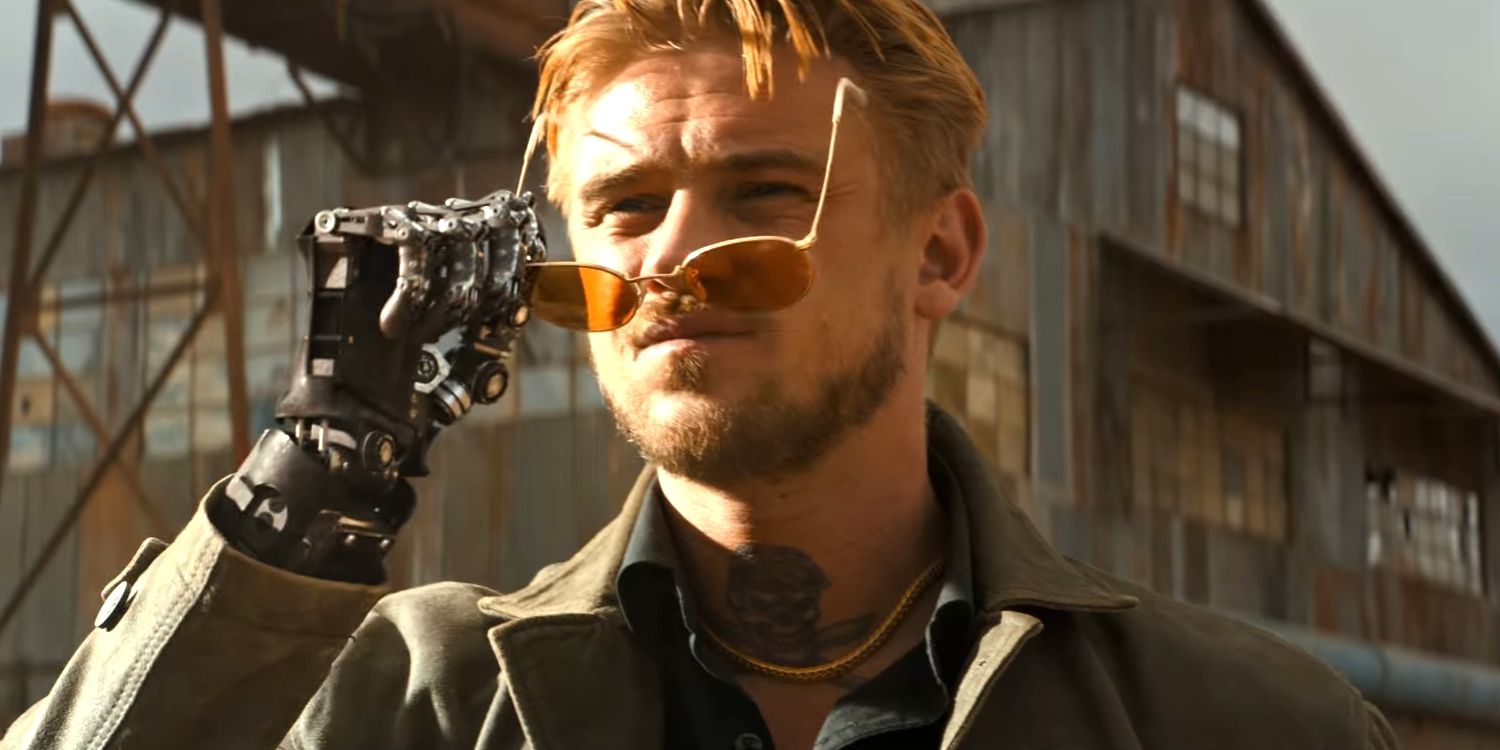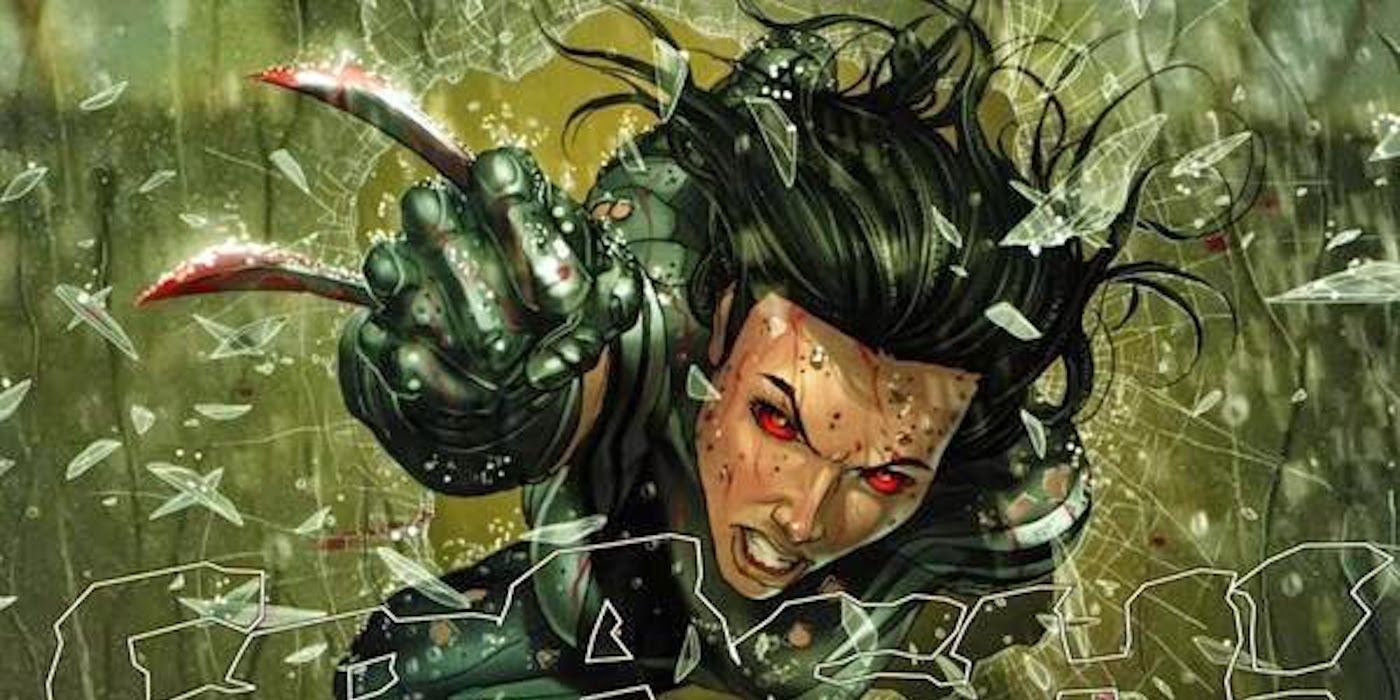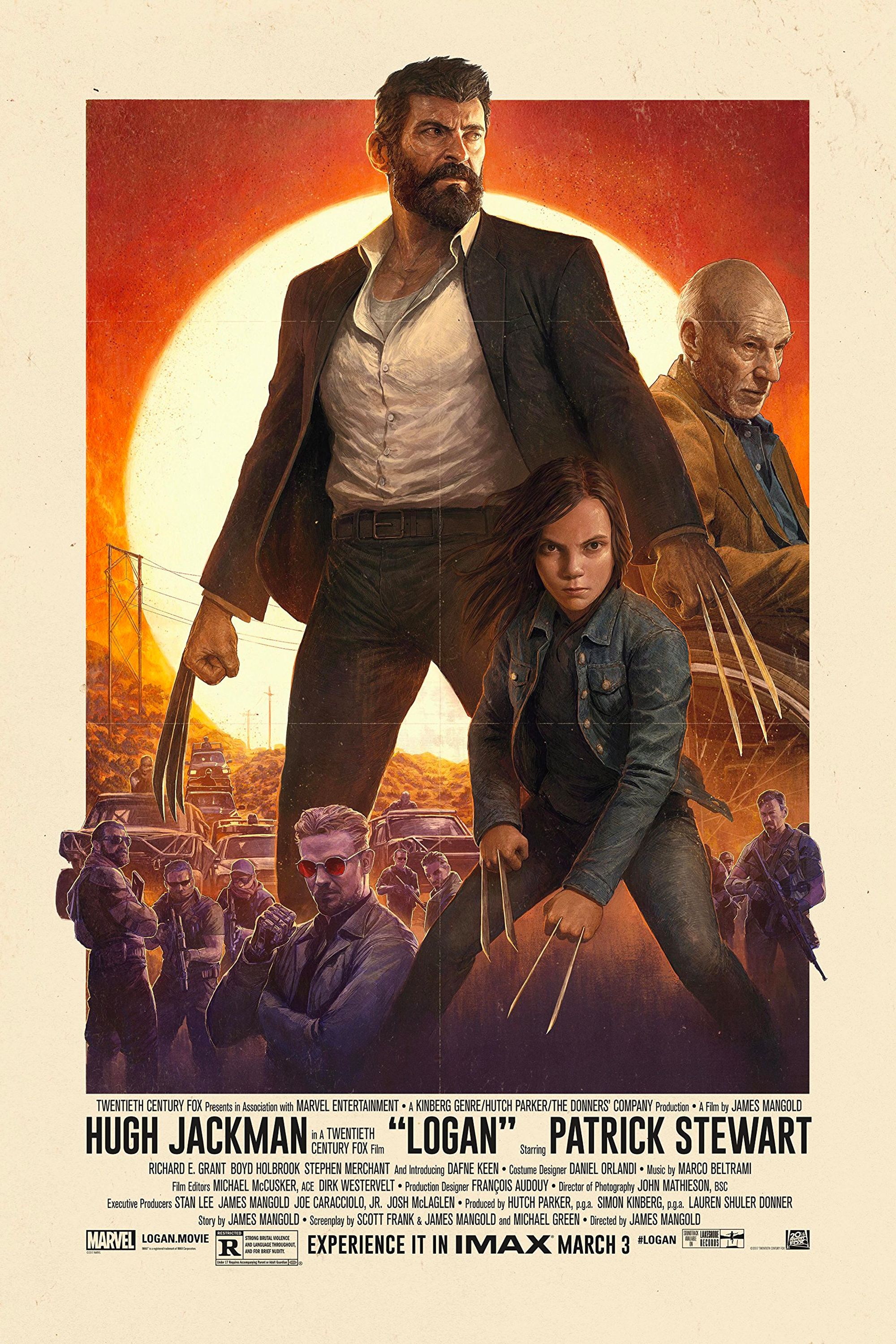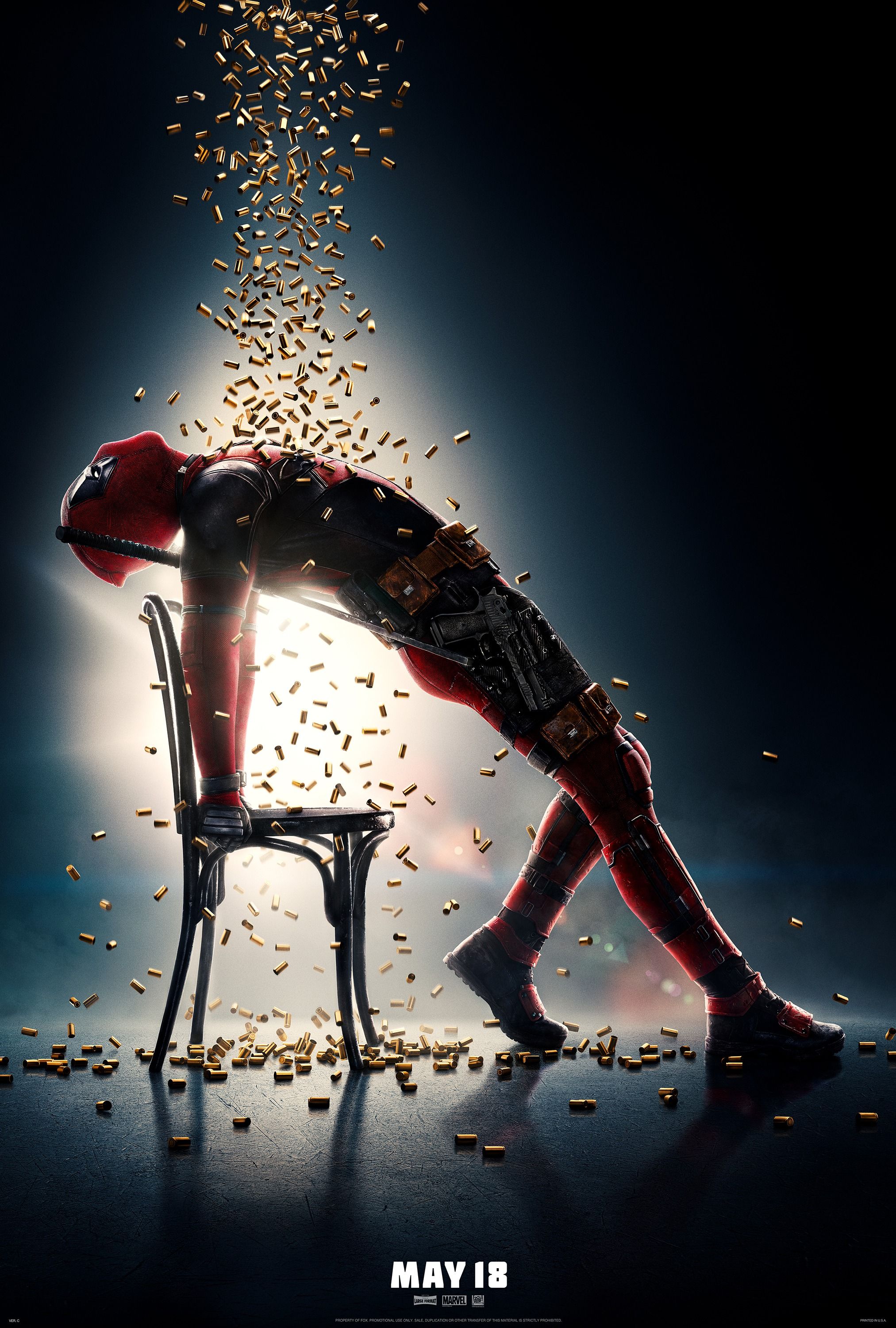Warning: Major SPOILERS for Logan ahead
-
One of the biggest successes of Logan's marketing was its complete lack of spoilers. Much of the focus of the Johnny Cash-scored trailers was on the showdown between Wolverine and the Reavers at his border hideout and the introduction of X-23, which was pretty much just the first act. Little was shown from later in the film and what was there was fleeting; the marketing had none of the plan to get to "Eden", the mutant power-enhancing serum and only glimpses of the childrens' attempt to escape to Canada. But the biggest thing it hid (there was just a single shot that hinted at the character's existence) was X-24.
Throughout the first act of the film, it's established that Laura and her lab-developed mutant friends are being hunted after being superseded by a new biological development. This "X-24" project is teased early on through Gabriela's cameraphone footage and seen locked up during Pierce's combat roll-out. We finally meet the new creation around the midway point; Professor X confesses, to someone he believes to be Logan, that he's responsible for wiping out the X-Men - before the figure stabs him, revealing itself as a violent, brutal tool of the villains. He stalks the movie from then on, eventually killing Wolverine and only being stopped by X-23 and an impeccably placed adamantium bullet.
But what exactly is going on with Hugh Jackman's other X-Men role? The beast is introduced suddenly and the explanation for his creation and part in Zander Rice's wider plan are cut short by a vengeful Wolverine, so here's a breakdown of everything you need to about Logan's villain, from movie origins to comic backstory.
What Is X-24?
X-24 is, essentially, a clone of Wolverine. Like Laura, he has been developed from DNA retrieved by Zander Rice, although instead of being the result of artificial insemination, he's a perfect genetic replication. It's not stated in the film, but the implication is that the source of the DNA used to create both Laura and X-24 is the vial seen taken by Essex Corp (the company controlled by major X-Men villain Mister Sinister) in X-Men: Apocalypse's post-credits scene. After Jean Grey freed an amnesiac Logan, leading to the death of most of the Alkali Lake staff, a group of suits collected remnants of the Weapon X program. That said, because director James Mangold has said he wanted to keep the film as removed from the series' complex timeline continuity as possible, there's always potential for alternate explanations and the return of the DNA in a different story down the line.
Visually, X-24 looks near identical to Wolverine (the main difference is his more brutish hairstyle). He has the same three claws, coated in adamantium, and the same quick-acting healing factor. It's not explicitly stated, but the undeniable advantage over his progenitor appears to be primarily due to Logan's comparable old age and adamantium poisoning, although there appears to have been some enhancement - both physical and psychological - to make the clone more unrelenting. The serum - a man-made mixture that enhances mutant powers in small doses, but can damage those overexposed - both has an effect on him and can be used in high doses, suggesting that while he isn't automatically imbued with it, he is somewhat immune to its side effects.
What most distinguishes X-24 from Wolverine is how he operates. Per his in-movie descriptions, the clone is made “without a soul” and powered by “pure rage”. He’s a monstrous mirror to Wolverine with no feeling or remorse, only controllable by his creator, Zander Rice - although it is shown that Pierce has some ability to direct the monster's actions and a group of Reavers monitor him through cameras.
Why Was X-24 Created?
The whole plot of Logan stems from Zander Rice’s attempts to “control” mutants. Not fearing them (like most humans), he saw the potential of their abilities and attempted to tap into that. When it became clear that he would be unable to successfully use natural X-Men - mainly because of that pesky issue of consent - he set about making his own enhanced beings.
X-24 was the final step of this development; the X-23 children were suitably powered, but had proven too unruly and free-thinking to turn into mutant soldiers, so he set about finding an alternative. Instead of raising children created via artificial insemination, Rice moved to cloning, using Wolverine’s DNA - previously used to create Laura - to breed a blank slate version of Logan. This was just a prototype, but the enhanced healing and inbuilt claws gave everything he needed, leading to the decision to get rid of the children.
This makes X-24 – essentially – the culmination of the process that first created Wolverine; taking mutants and experimenting on them was simply the early stages of this playing God. We even learn that Zander Rice’s father was involved in the Weapon X program and killed during Logan’s escape, creating a very warped counterpoint to the film’s torch-passing and familial themes; he is almost a co-father figure/anti-role model to Laura.
What Other Tech Has Rice Created?
X-24 was the culmination of years of experimentation, but there’s plenty of other things Rice has been up to.
Most dramatically, Pierce states that the scientist was responsible for wiping out mutant-kind. We know Professor X was the cause of the Westchester incident - a cataclysmic explosion of his powers that, according to a radio report, killed seventy of the X-Men - but the wider extinction was to some degree orchestrated by Zander, an attempt to remove opposition to control mutants. How he achieved the movie's Children of Men-esque scenario, stopping new conception, is unclear. It may have something to do with the serum, which appears to have once been a widely available and not-as-suspect drug; it could have even been abuse of this that led to Xavier’s massacre. His next point of call was the Reavers – a mechanical alternative to mutations – but they proved volatile; as seen in the movie, they’re gung-ho soldiers, so while commandable aren’t fully controllable. This led to the children, and then X-24.
What Rice's experiments are personified by is an attempt to reduce free will and gain total obedience from greater powers he barely even viewed as human; a dark twist on the X-Men series' ever-present themes of outsiders in society. X-24 is the epoch of that, which makes its death a rather fitting end note to Wolverine's journey over the past seventeen years; his clone's ultimate rage-induced power was undone by an obliviousness to compassion.
What Is The Comic Book Inspiration For X-24?
X-24 has some of the least explicit comic roots of any X-Men screen villain yet. In print, the only mention of an X-24 was one of several projects (X-24 to X-50) proposed by Dr. Rice after the successful creation of X-23, but the subject never made it out of its incubation pod before the scientist was killed by Laura. The film's notion of creating a successor to Laura is there, although in terms of actual creation the movie version of X-24 has more in common with the print version of X-23 herself; in the comic books, she is a clone of Wolverine made from corrupted DNA and controlled by Rice using a specially-develop rage trigger scent.
Conversely, the comic book Dr. Rice operated in a similar manner to his on-screen counterpart, albeit with different motivations. In print he was slightly younger (to allow for the timeline difference), more directly vengeful of Logan's actions and explicitly trying to restart the Weapon X program, but he was still ultimately driven by developing a rage-induced, Wolverine-inspired weapon. His story was more tightly linked to X-23, however, with her the main focus of his experiments and X-24-50 more a business concern.
Another character with whom X-24 oddly shares some parallels is the Origins version of Deadpool; both are an automation mirror of our hero controlled by human scientists and monitored by in-built cameras. Whether that's intentional or not is unclear (although it probably isn't), but what makes Logan's case different is that here it feels like a natural part of the world's progression, and not just a desperate attempt to shoehorn in a fan-favorite hero.

